Crop rotation: a guide to healthier, more abundant veg
Our easy guide to crop rotation will give you more chance of success in your vegetable patch next year

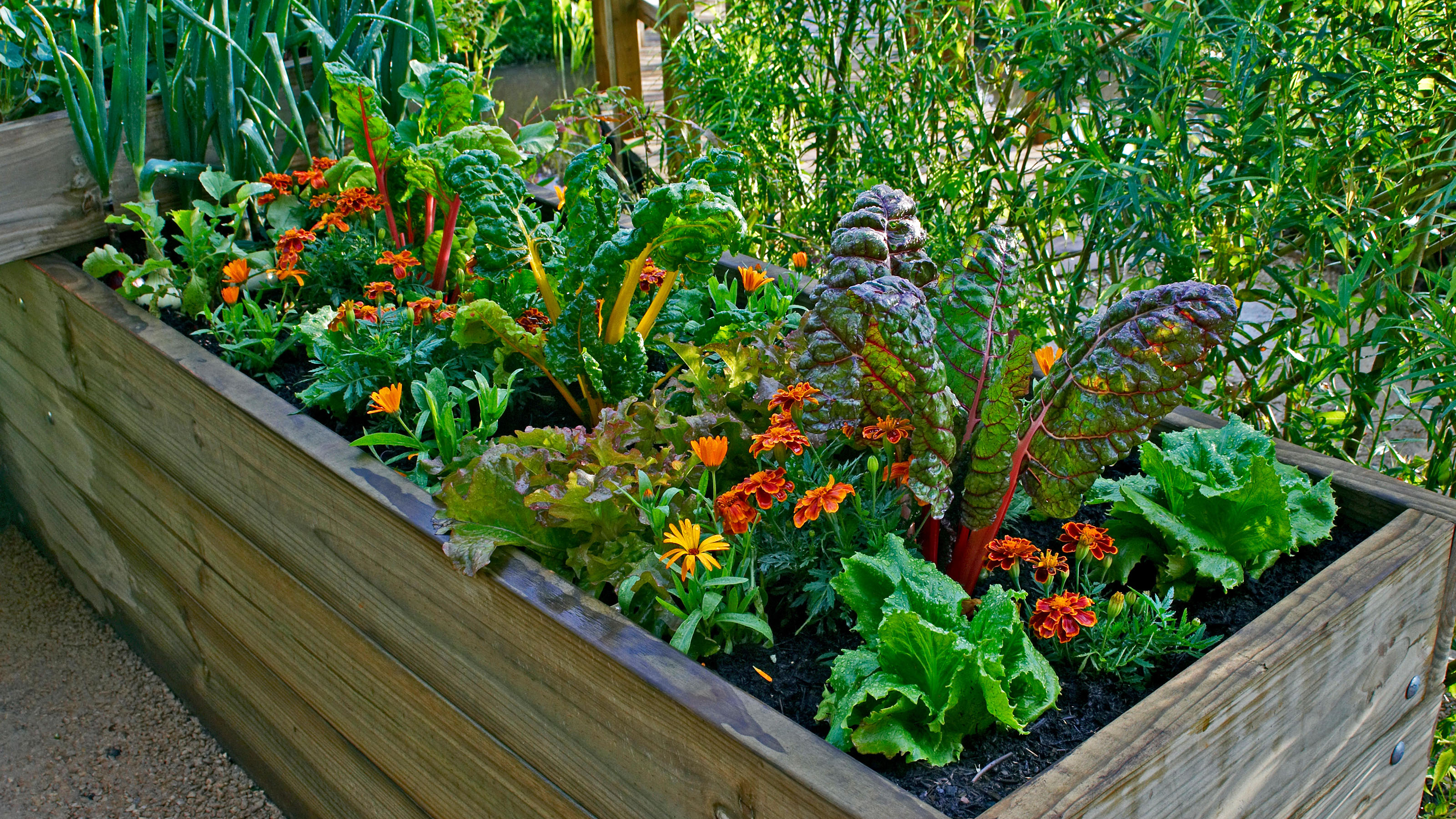
Using a cyclical system of crop rotation for growing edible crops is easy and creates a vegetable plot that is cheaper and easier to manage. This easy-to-follow method will give a bounty of healthy produce year after year whether this is in a large vegetable patch, allotment or a small area of raised beds.
Not rotating your crops is a common planting mistake that attracts pest. The basic principle is that waiting a few years before growing a vegetable in the same place, weakens pests, reduces disease, and allows the soil to regenerate.
This rotation system is nothing new. The Ancient Egyptians alternated two crops, and the Romans used a three-year rotation, which they introduced here. Farmers used the three-year cycle, until the 18th century, when Charles Townshend popularised the revolutionary four-year system of growing wheat, turnips, barley, and clover in turn.
Turnips loosened the soil and provided food for livestock; while clover fixed nitrogen into the soil, as well as feeding animals, whose manure could be ploughed back into the soil. The gardening equivalent works on the same principles, only without animals and using vegetables. For example, peas and beans fix nitrogen into the soil and are therefore planted after crops that deplete the soil.
The rotation system can be easily adapted to suit your own kitchen garden ideas, so the benefits can be reaped no matter how big or small your vegetable garden is.
What is crop rotation?
Crop rotation is the practice of growing groups of vegetable and salad crops in sequence. The growing area is usually divided into three to five sections, depending on its size. Crop groups (such as Root vegetables or Legumes) are not grown in the same section for more than one year. Rather, they are rotated, year by year, in sequence, around the different sections.
For example, the section that Legumes are grown in on year one might be used to grow Brassicas in year two. Divided into three sections, the soil would have a breathing period of two years before being used to grow Legumes again; divided into four sections, it would have a breathing period of three years. The longer the time, the better, but in a small vegetable garden, a four- or five-section area is not always possible.
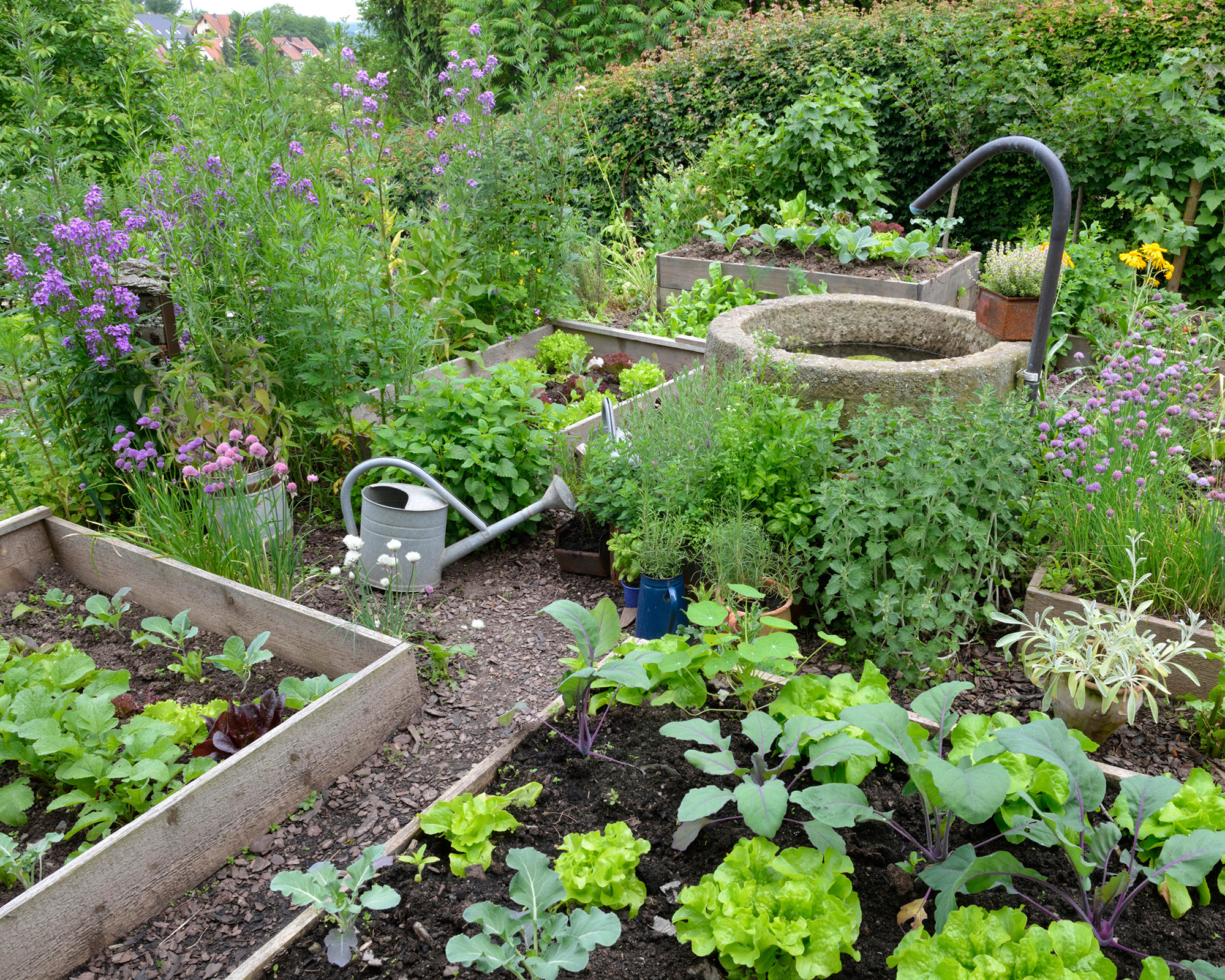
3 year crop rotation
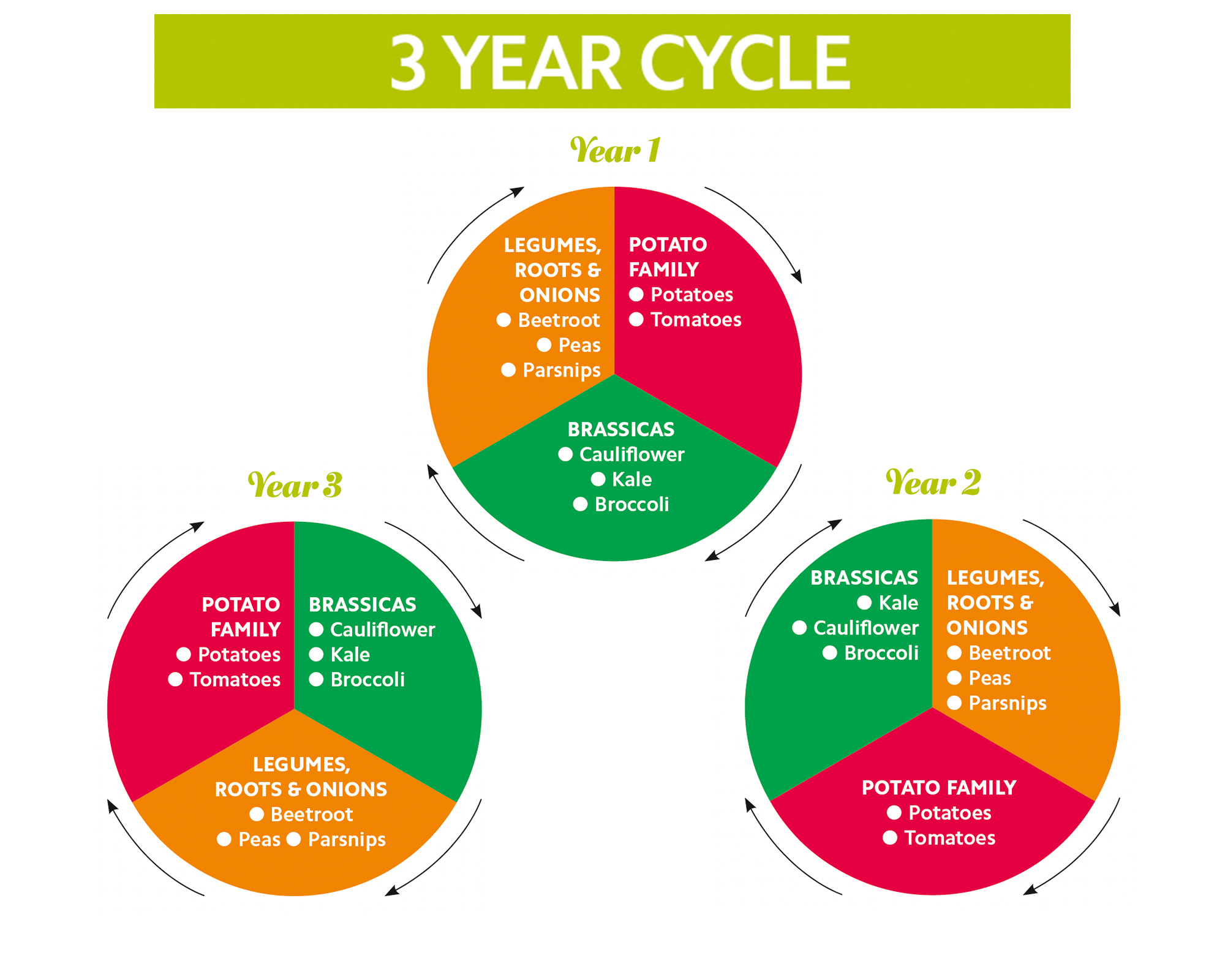
The diagram illustrates a good example of a three-year crop rotation system for the average small garden. Of course, the beds don’t have to be in a circle and could be three rectangular raised garden beds side by side. Using this method, Legumes, Roots & Onions follow the Potato Family and the Potato Family follows Brassicas.
This allows each area of soil to have a two-year breathing period from each crop group. Any vegetable that fits into those groups could be grown. For instance, in the Legumes, Roots & Onions section, you might grow parsnips and carrots in year one, beetroot and celery in year two, and celeriac and carrots in year three.
4 year crop rotation
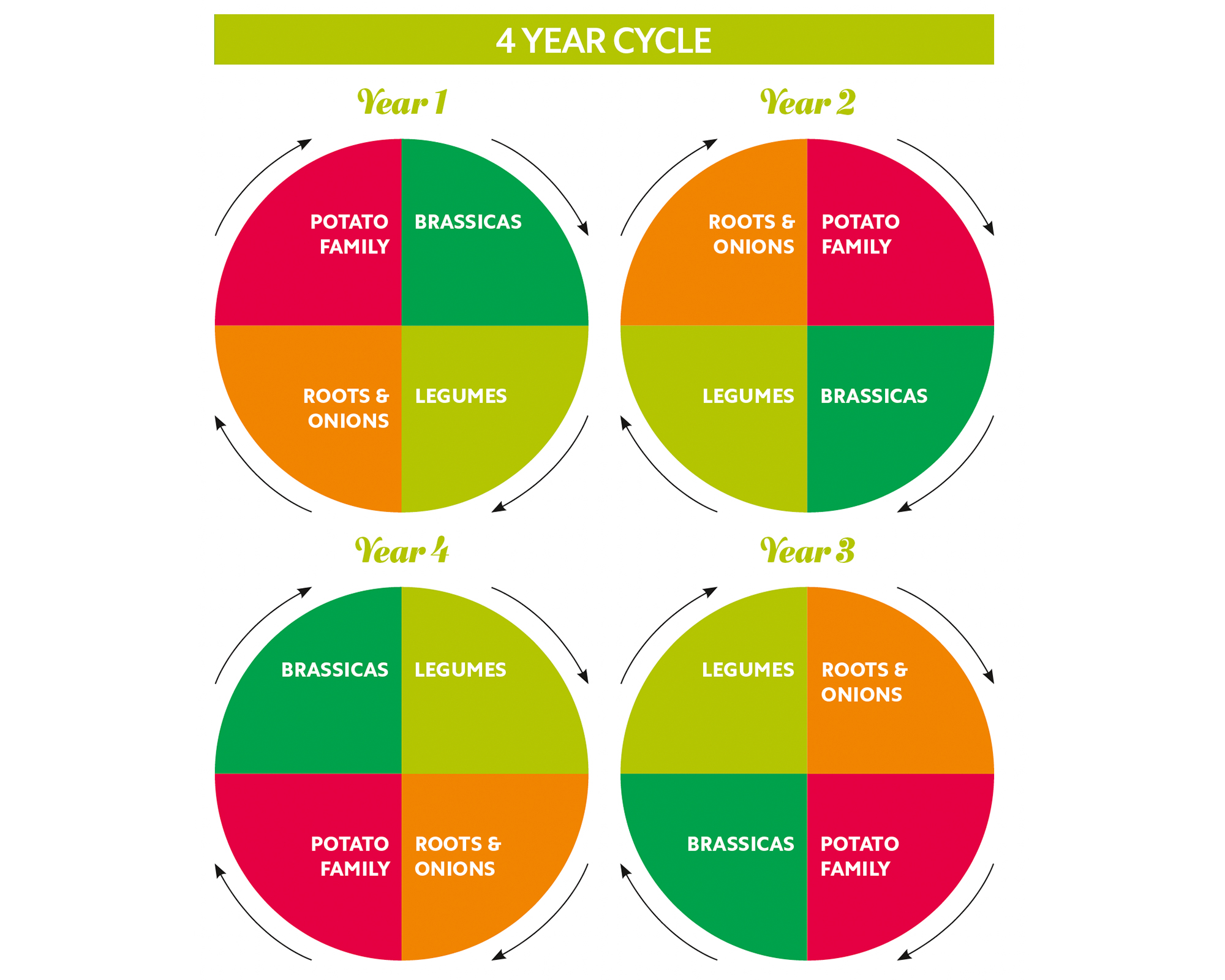
A recommended four-year crop rotation system is illustrated in the diagram. Heavy-feeding Brassicas follow Legumes, which replenish the soil with nutrients; the deep-rooted Potato Family follows Brassicas, which break up the soil for them; weed-sensitive Roots and Onions follow Potatoes, which have suppressed weeds; and Legumes follow Roots and Onions, which have loosened the soil for them. Doing this alongside companion planting can really help to boost your crops.
Any vegetable or salad that sits under the umbrella of each crop group can be grown. For instance, in the Brassicas section, you could grow kale, rocket, and Brussel sprouts one year and broccoli, swede, and cauliflower the following year.
How do you crop rotate?
Organizing crop rotation in any sized space will just need five simple steps. From planning to execution for healthy, happy veg.
1. Decide what to grow
Make a list of the edible crops you want to grow in a rotation system, grouping them into Roots, Brassicas, Legumes, Onions, and Potato Family, and make a separate list of those that don’t require including in a rotation system.
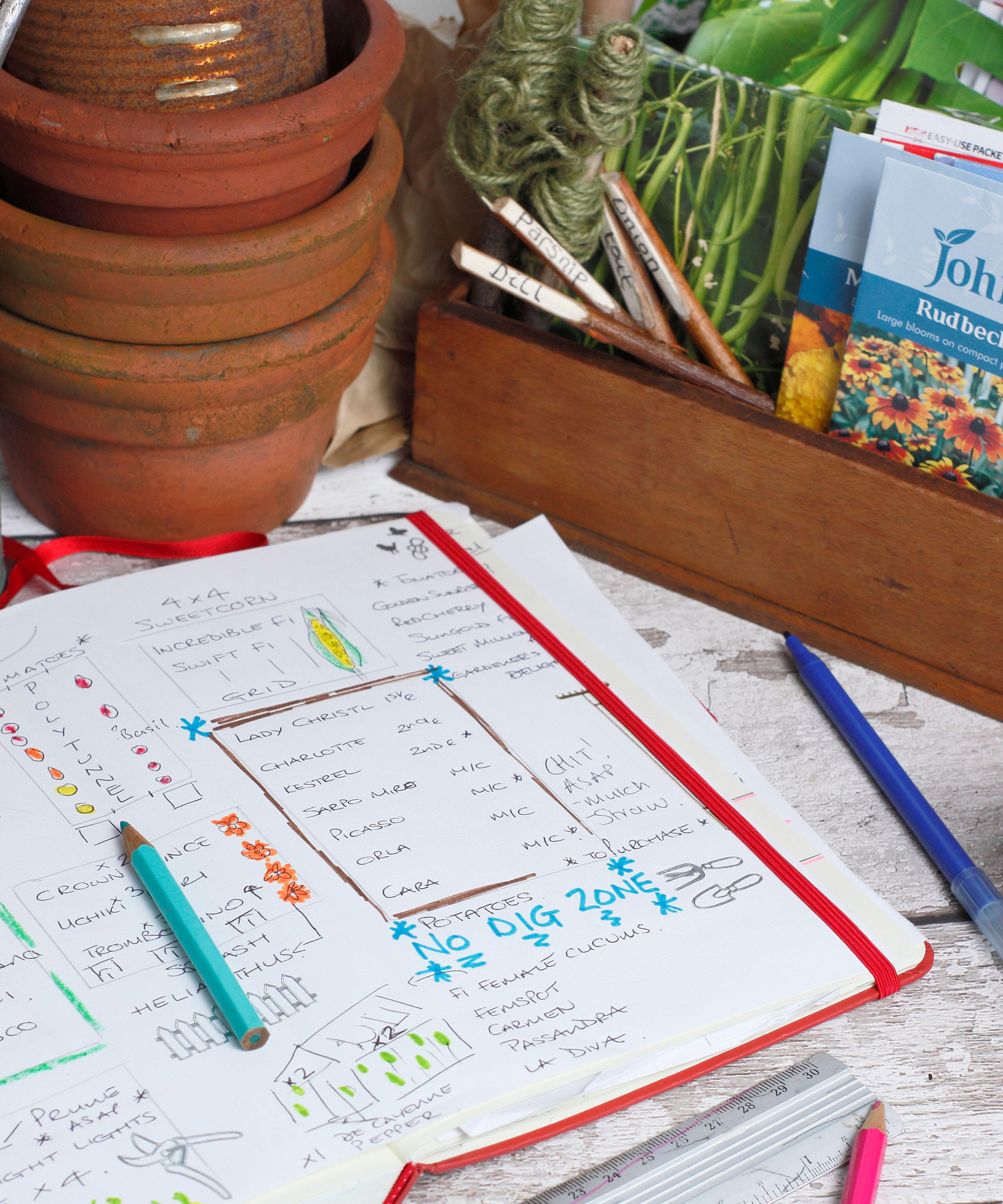
2. Decide on a 3, 4 or 5 year rotation system
Depending on the size of your vegetable garden and how many crops you want to grow from each group, decide whether you are going to employ a three, four, or five-year rotation system. In a four-year system, Roots and Onions become one group, and in a three-year system, Roots, Onions, and Legumes become one group.

3. Decide on a design
If you’re feeling energetic and creative, you may want to make your veg patch part of your overall garden design ideas. And at the same time transform the vegetable patch to better house your new rotation system. For instance, you might create a circle of five raised beds that surround a central bed reserved for crops that don’t require rotating (such as lettuce). Permanent rectangular beds for other crops that don’t require rotation (such as asparagus, sweetcorn, pumpkins, and soft fruit) could lie at either end of the kitchen garden.
Alternatively, work with what you already have, simply dividing your growing area into distinct sections. These sections might be marked out using garden sleepers or planks of wood. Most gardeners use a four-year rotation system comprising four rectangular beds of equal size.
4. Decide on a sequence
Choose the order of growing you’re going to use. Gardeners opt for different systems, and there isn’t one that’s absolutely better than another. There are two main options which are either a three-year or four-year system. However, it is possible to create your own sequence based on what crops you'll be growing and if you have a large garden with plenty of growing space.

5. Get growing
After the first year, move each crop a step forward in a clockwise direction around the beds, as if you were turning the vegetable garden like a wheel.
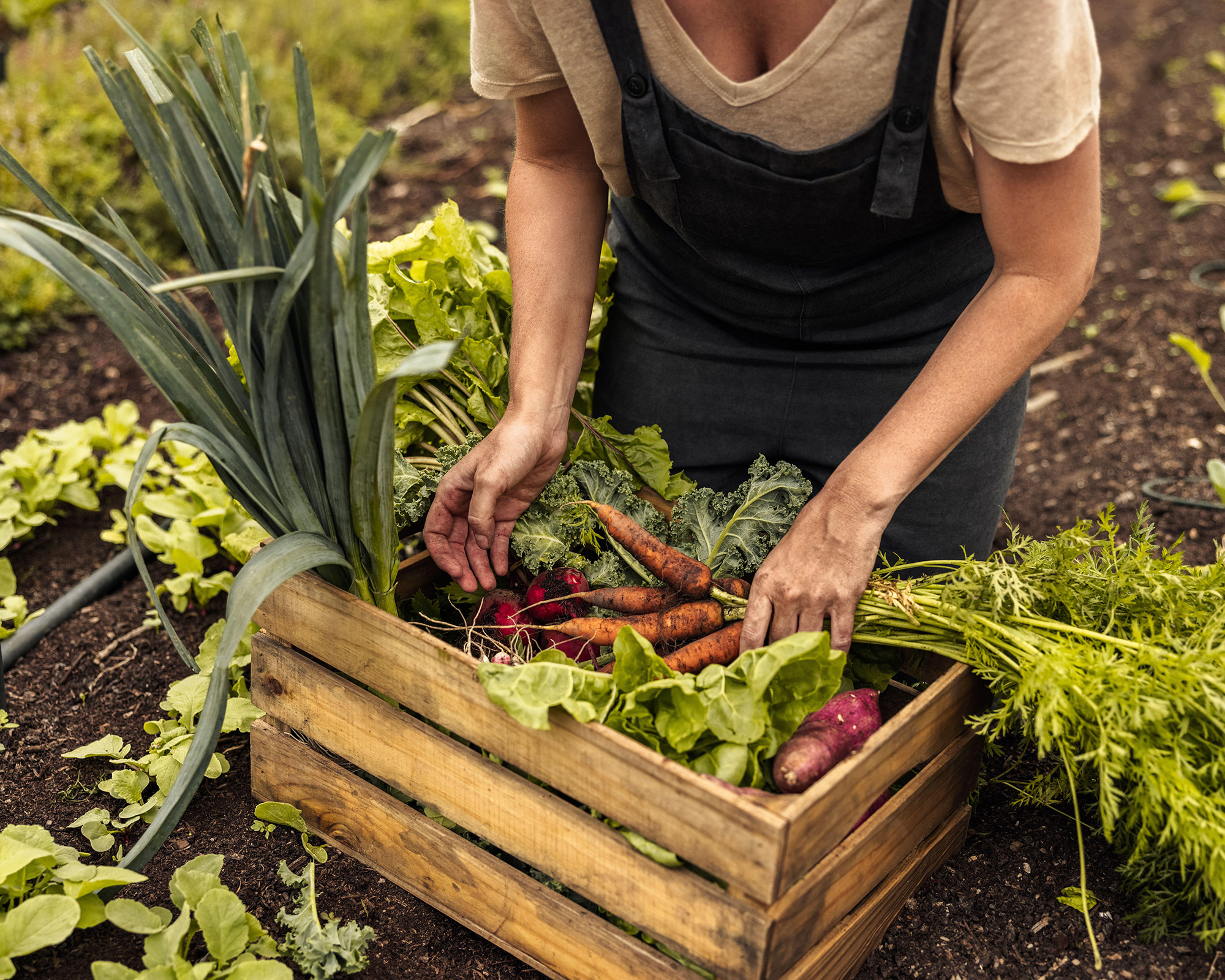
Which plants should be crop rotated?
- POTATO FAMILY - Potatoes and tomatoes
If you're learning how to grow potatoes, you might know that they help to suppress weeds and can therefore be followed by Roots or Legumes, which can be challenged by weeds. Potatoes are heavy feeders, so they could be followed by Legumes, which nourish the soil. The earth is dug well before planting potatoes and thus they can be followed by Legumes, which hate solid soil. - LEGUMES - Peas, mange tout, and broad beans
Legumes fix nitrogen into the soil and could therefore be followed by either Potatoes or Brassicas, which both enjoy a nutritious soil. - BRASSICAS - Kale, cabbage, broccoli, rocket, pak choi, mizuna, cauliflower, Brussel sprouts, kohl rabi, oriental greens, turnip, swede, and radish
Brassicas are heavy feeders and in turn can be followed by Legumes, which feed the soil. Brassicas break up the soil and consequently are great followed by Potatoes, which enjoy a well-dug soil. - ROOTS - Carrot, beetroot, celery, parsnip, fennel, celeriac, and parsley
Root vegetables dislike rich soil and can therefore follow heavy feeders (such as Potatoes and Brassicas). Roots loosen soil and can thus be followed by Potatoes or Legumes, which dislike solid soil. Our guides on how to grow carrots and how to grow beetroot have more growing tips for these root vegetables. - ONIONS - Onion, shallot, leek, and garlic
If learning how to grow onions, it's useful to know that they are light feeders, which makes hungry crops (such as Potatoes or Brassicas) their ideal successors.
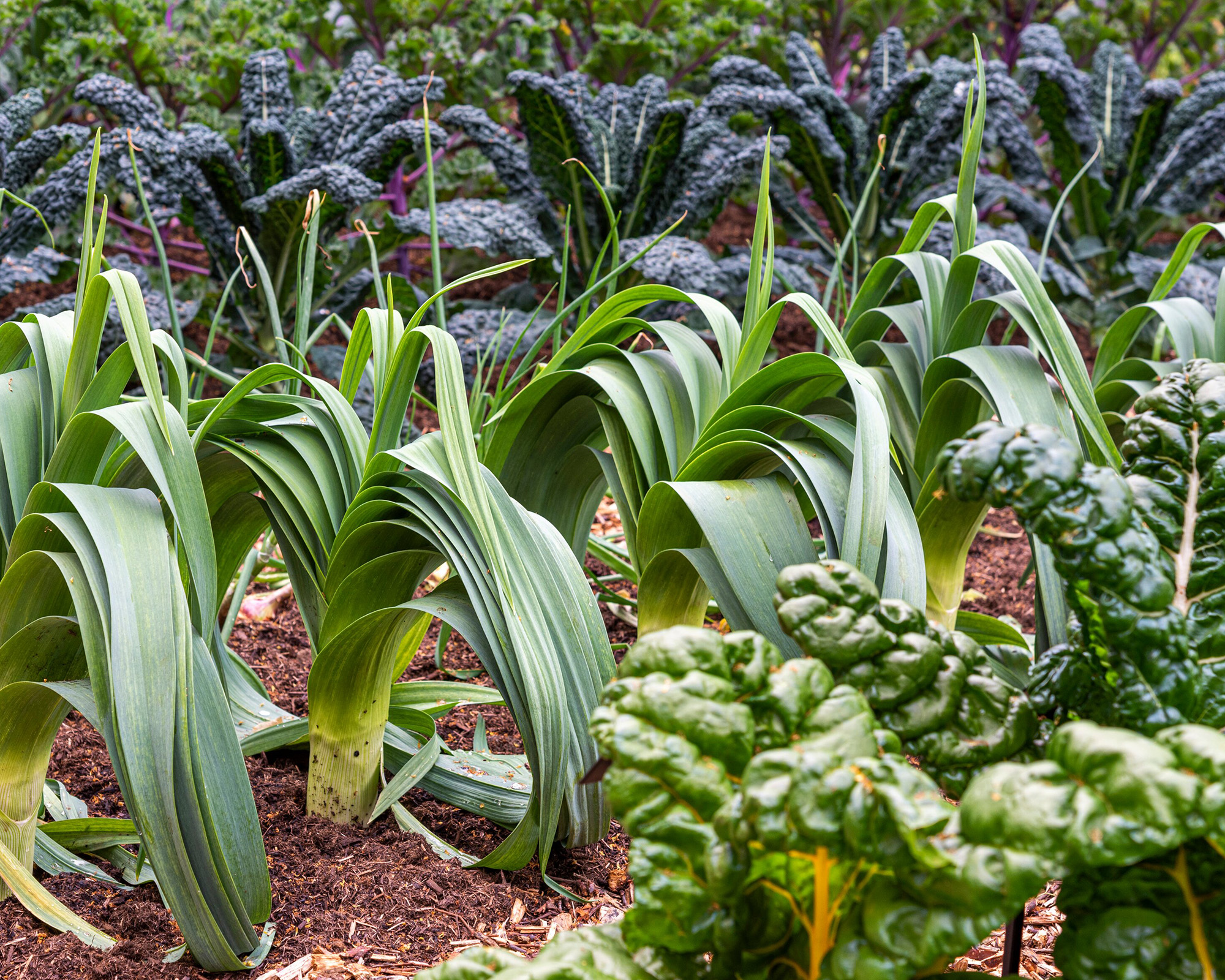
Which crops don't need to be rotated?
Annual crops can be placed anywhere within a system of rotation beds or grown in a separate area in your potager garden. Most perennial crops do not need to be rotated and require their own dedicated area.
- Lettuce
- Spinach
- Sweetcorn
- Courgette
- Cucumber
- Pumpkin
- Squash
- Pepper
- Aubergine
- Rhubarb
- Soft fruit
- Asparagus
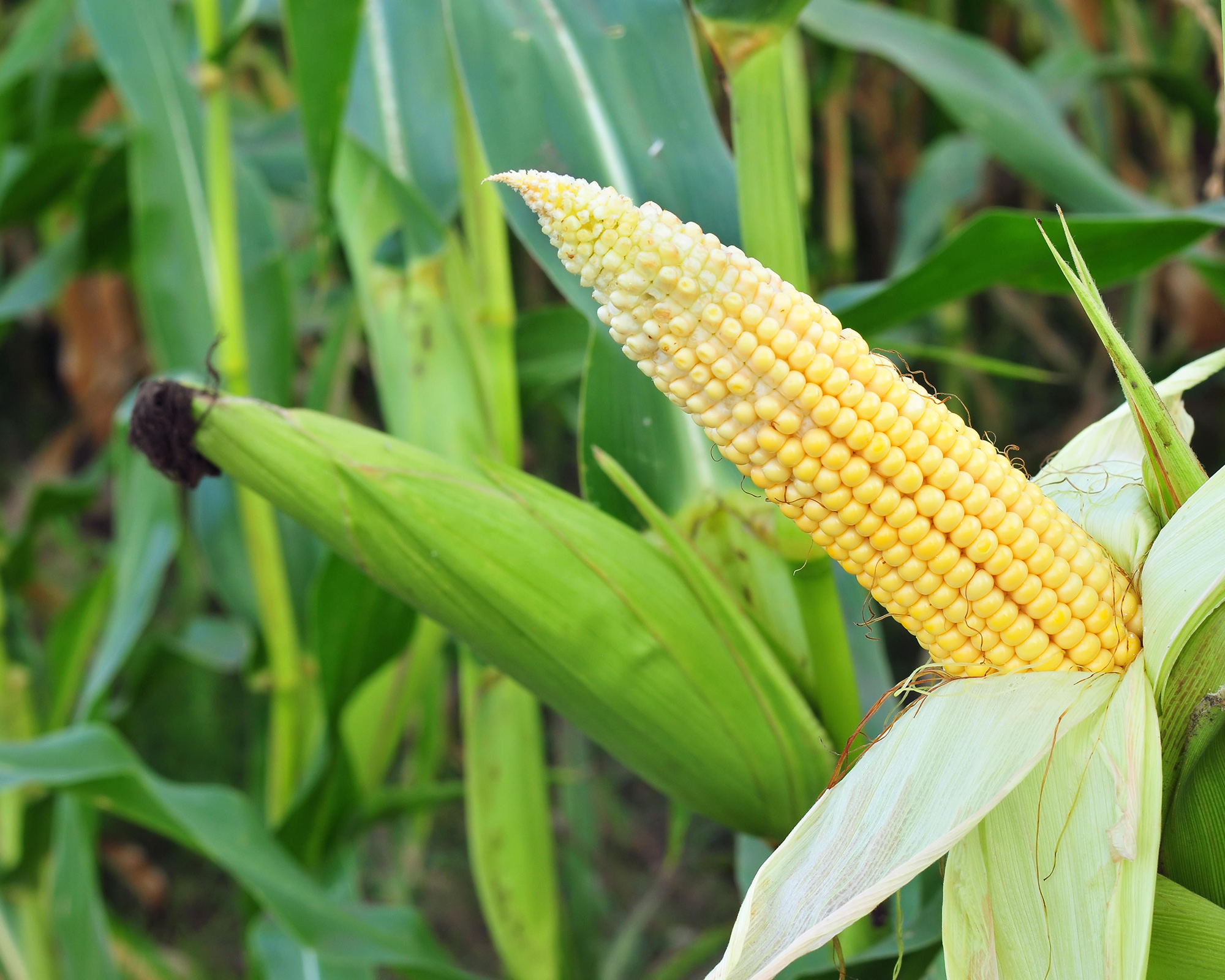
Crop rotation in a small garden
For smaller vegetable gardens, a three-year rotation system is best employed, usually using three rectangular or square sections side by side. Alternatively, this might involve raised beds.
While in a very small garden, where there is only room for two beds, a two-year system could be used, in which heavy-feeding crops (such as kale) are alternated with crops that replenish the soil (such as peas).
There is also the option of using crop rotation by growing vegetables in pots – for example, on a roof terrace.
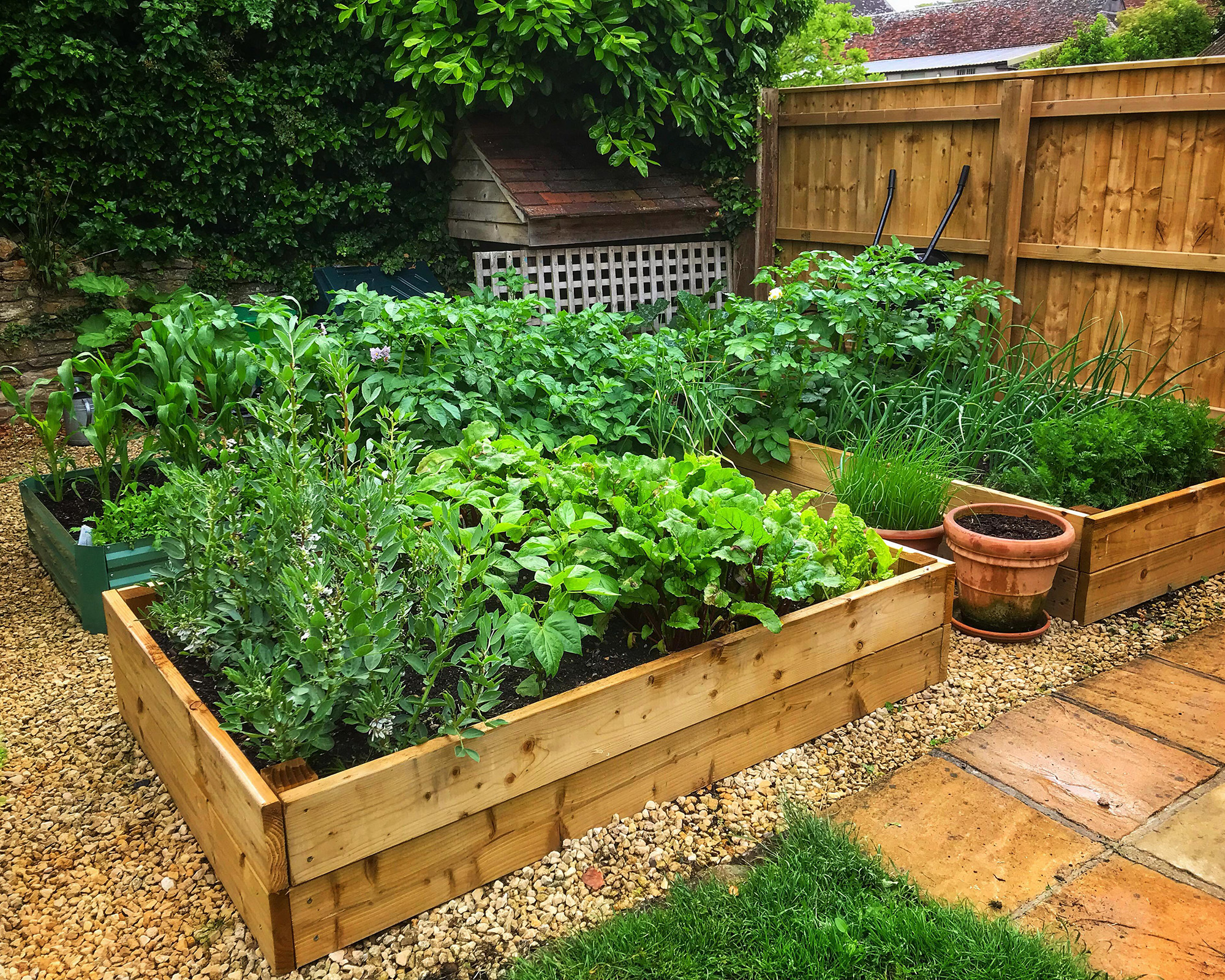
Crop rotation with tomatoes
Tomatoes are part of the Potato Family and can therefore be grown alongside potatoes. In a three-bed, three-year crop rotation system, they can be followed by peas, carrots, and onions, which in turn are followed by kale and broccoli. So, the Potato Family is followed by Legumes, Roots & Onions, which are followed by Brassicas.
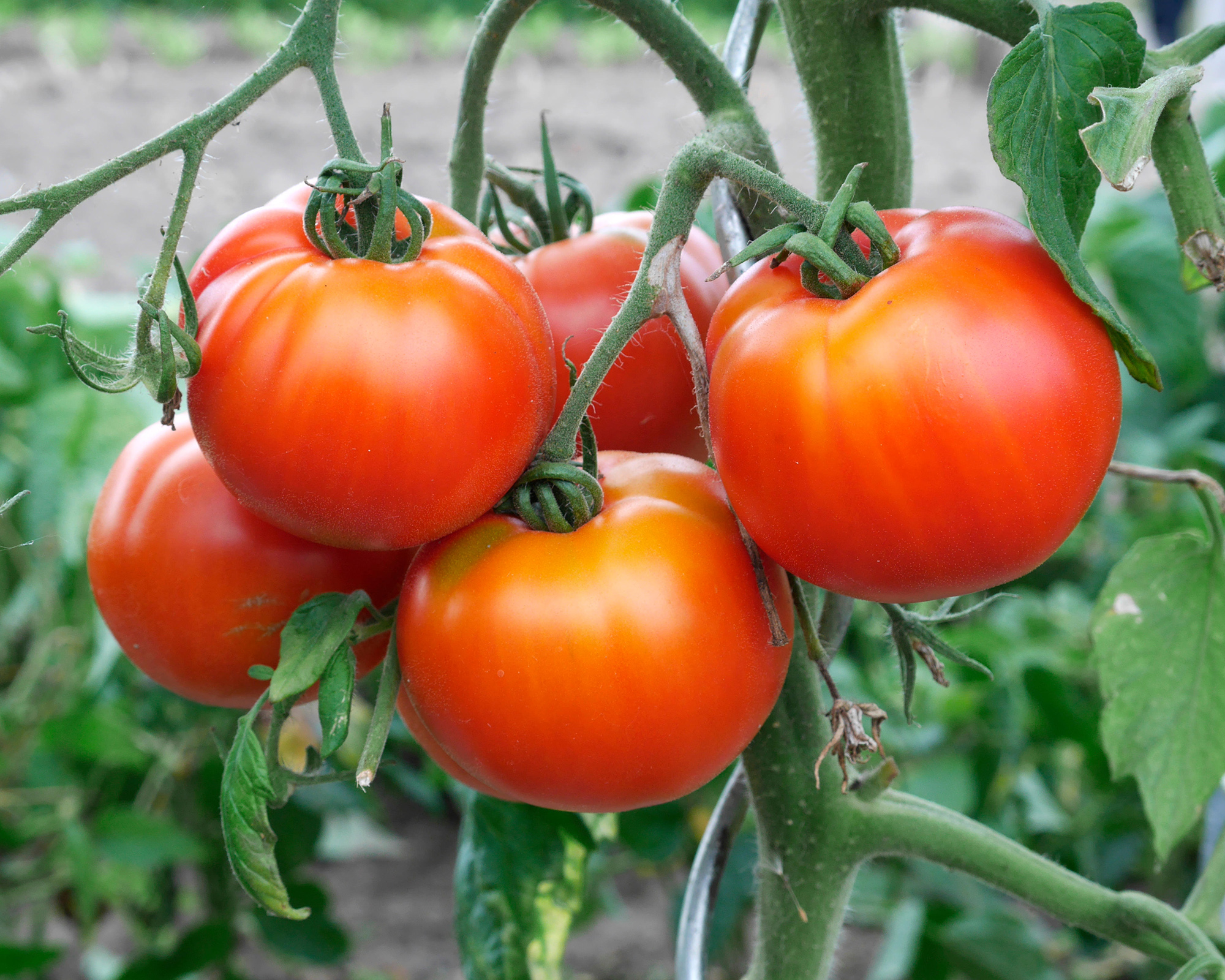
Crop rotation with potatoes
Potatoes are great at suppressing weeds, because they have large leaves, which is one of the best weed killers. Therefore, they are great grown in a rotation system before crops that loathe weeds, such as Roots or Legumes. So, in a three-bed, three-year rotation system, you could follow potatoes with peas, and follow peas with kale and cabbage.
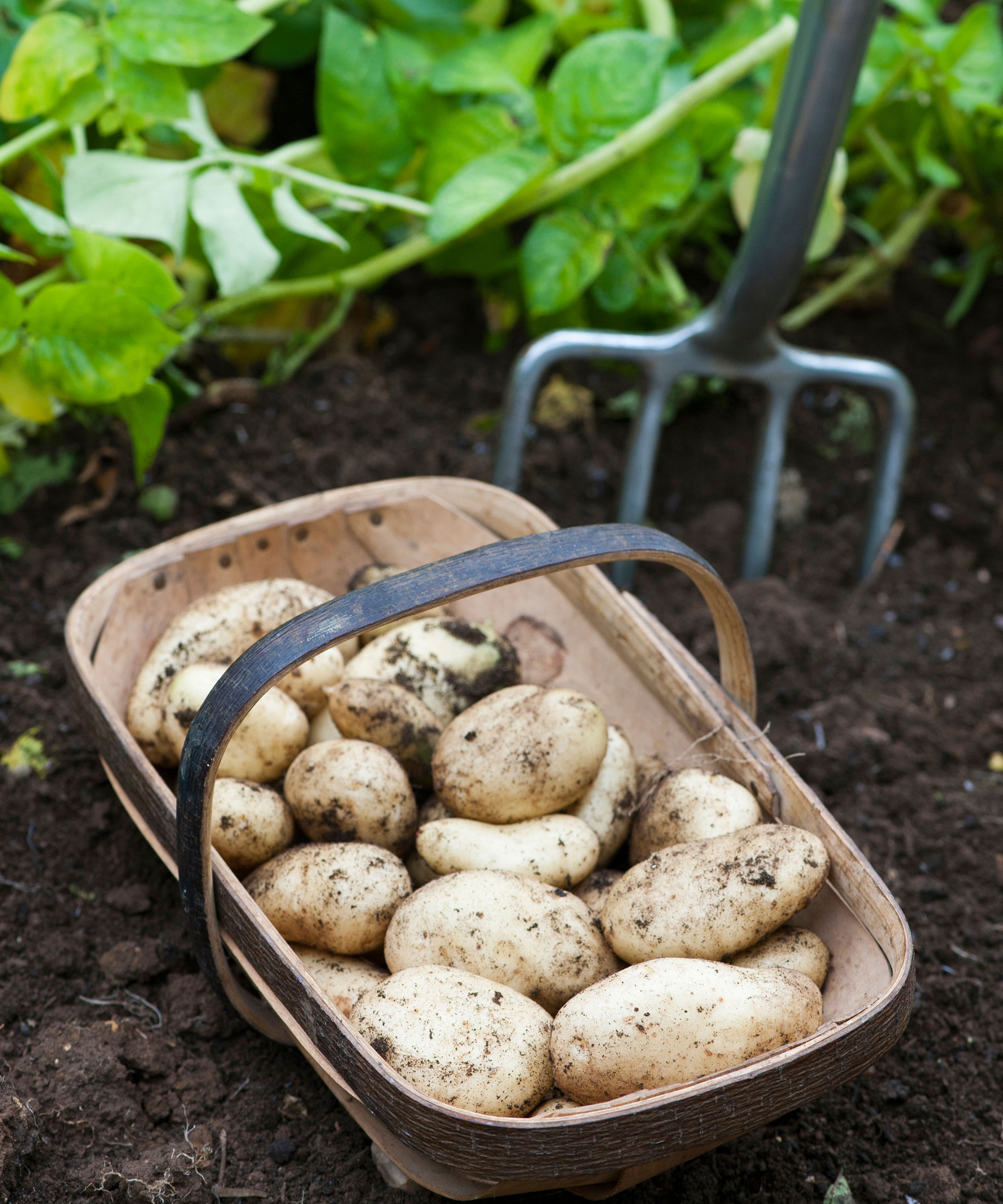
Crop rotation with garlic
Garlic is one of the best winter vegetables to grow and is part of the Onions crop group, which does not deplete the soil. Therefore, it can be grown after a very hungry crop, such as Potatoes or Brassicas. For instance, you might grow garlic, shallots, parsnips and carrots in a bed that has just had broccoli and oriental greens growing in it.

Crop rotation with strawberries
Strawberries are best grown in the same place for three years, after which, it’s wise – in order to prevent disease and maintain yield – to start again in another area of the kitchen garden. Choose a place where Brassicas in manured soil (for example cabbages) or Legumes have just grown. For best results with how to grow strawberries, never grow them on soil that has recently had potatoes or tomatoes growing in it because the verticillium wilt that can plague them affects strawberries.
For even better results with your strawberry crop, you can grow the best companion plants for strawberries in the same vegetable bed.


Teresa has worked as an Editor on a number of gardening magazines for three years now. So she is lucky enough to see and write about gardening across all sizes, budgets and abilities. She recently moved into her first home and the garden is a real project! Currently she is relishing planning her own design and planting schemes. What she is most passionate about when it comes to gardening are the positive effects it has on our mental health to grow and care for plants, as well as being great for the environment too and help provide food and shelter for wildlife.
